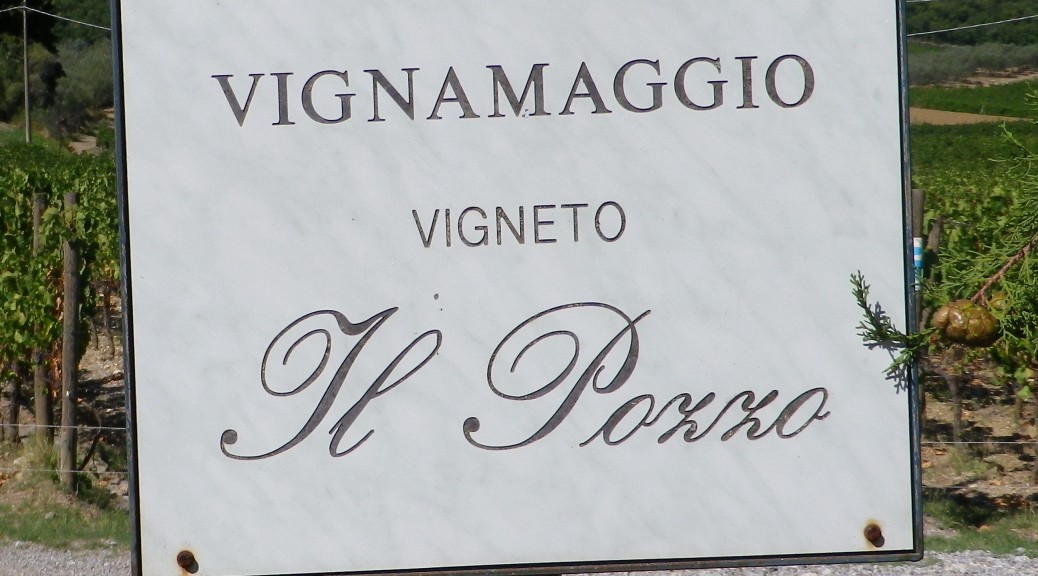What I Learned (The Region and Districts)
Chianti is the area south of Florence and north of Siena, in Tuscany. The area is a large one. Forests, olive groves and vine dot the slopes of its many hills. In between are small towns with names widely known by travelers to Tuscany as iconic Chianti villages and towns: Radda in Chianti, Castellina in Chianti, Gaiole in Chianti.
Grapes have been grown and wine has been produced here since at least Etruscan times, which predates the classical Roman era by centuries. Although the varietal or methods of production might not be known, it is certain that the Etruscans enjoyed wine immensely. Many of their fabulous tombs contain frescos of feasts, food and wine both portrayed. As an underwater excavation in 2000 demonstrated, the Etruscans even exported their wines, pouring it in large amphorae, sealing them with cork!
A Medici Grand Duke of Tuscany, who truly appreciated his Chianti, famously promulgated the first wine district designation and rules in 1716. The initial territory identified as the Chianti production area was essentially the small towns named above with their surrounding countryside. Over time though, that designation changed. By the 1970s, what could officially be identified as Chianti, came from a much, much larger range of area, and the era of the ubiquitous straw-covered bottles began in Italian eateries abroad.
In the 1930s, the area known as Chianti had expanded even more significantly. Consequently, it was divided into 8 sub-districts: Colli Aretini, Colli Fiorentini, Colli Senesi, Colline Pisane, Montalbano, Montespertoli and Ruffina. But the most famous district is the Chianti Classico district. The “Classico” is a reference to the original or classic land of Chianti-designated wine. This designation includes the towns of Radda in Chianti, Castellina in Chianti, Gaiole in Chianti, Castelnuovo Berardenga and Poggibonsi in the Province of Siena, and the towns of Greve in Chianti, San Casciano, Barberino Val d’Elsa, and Tavarnelle Val di Pesa in the Province of Florence.
In 1984, new laws established the rules for producing the highest quality Chianti Classico wines. Vintners had risen to the quality challenges of the 1960s and 1970s, and were accorded the right to label certain Chianti Classico wines with “DOCG” (Denominazione di Origine Controllata e Garantita), the highest quality level of Italian wines!
The wines below came from the area around Greve, in the northern part of the Chianti Classico zone.
What I Tasted
2013 Chianti Classico, DOCG, Vignamaggio: A dry red wine (100 percent Sangiovese); with medium dark ruby-red color; Red berries and spice on the nose with flavors of raspberry and cherry; Medium tannins.
2013 Chianti Classico, Gherardino, DOCG, Vignamaggio: A dry red wine (80-90 percent Sangiovese, the balance is Merlot), with a ruby-red color; Vegetal nose, and flavors of blackberry, cherry and oak; Very mild tannins.
2013 Chianti Classico, DOCG, Altiero, Montefioralle: A dry red wine (100 percent Sangiovese), with medium ruby-red color; Vegetal nose, with red berry and oak flavors; Medium tannins.
2010 Chianti Classico, Riserva di Mona Lisa, DOCG, Vignamaggio: A dry red wine (80 percent Sangiovese, 10 percent Merlot, 10 percent Cabernet Sauvignon), with medium to medium dark, ruby-red color; Cherry and mineral nose, cherry, vanilla, and smoky flavors; Mild tannins.
2011 Chianti Classico, Agostino Petri, DOCG, Vicchiomaggio: A dry red wine (90 percent Sangiovese, 5 percent Canaiolo and 5 percent Cabernet Sauvignon) with very dark red color; hints of smoke on the nose, and flavors of blackberry and smoke; Mild to medium tannins.
